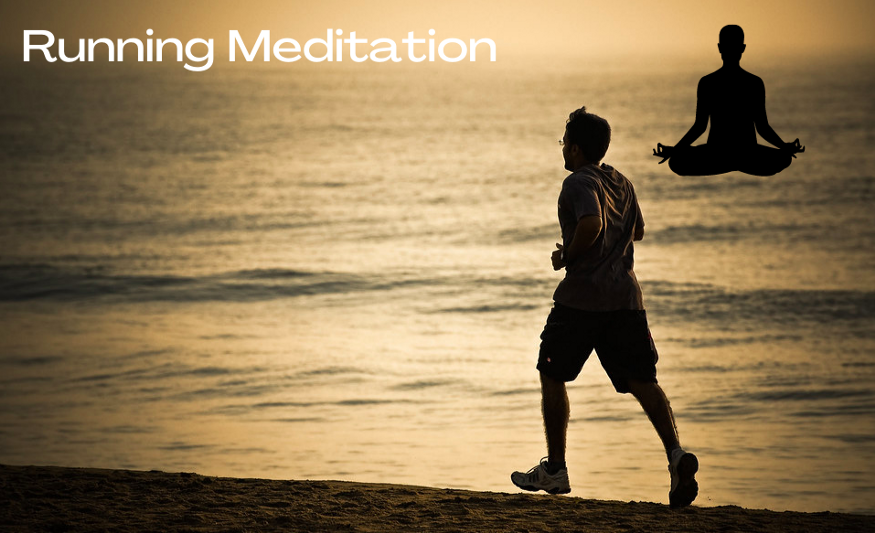Meditation is a practice of intentionally turning your attention away from distracting thoughts toward a single point of reference (e.g., the breath, bodily sensations, compassion, a specific thought, etc.). Research shows that meditation can have a number of positive benefits, including more positive moods, increased concentration, and more feelings of social connection.
Meditation can be very challenging for the beginners. General belief is that meditation has to be done while seated, with eyes closed. It can be very difficult to quieten your mind and can get very boring. Does this Sound familiar? You are not alone. Sitting meditation is great but is not for everyone.
Default Mode Network (DMN)
When we are idle or not doing any focused task, an interconnected group of brain structures gets activated which is called as the default mode network (DMN). Daydreaming, mind-wandering or thinking about past or future also activates DMN.
When we sit quiet to meditate, often the mind-wandering starts. The purpose of the meditation is to reduce or stop the mind wandering by focusing on a specific object or a thought. These two contrasting activities makes the meditation very difficult, specially for beginners.
Running and DMN
During running, there is an increased flow of blood to the brain. During run the activities in DMN are reduced significantly which makes it easier for runner to focus better.
Running meditation can provide the same benefits as a sitting meditation but it is so much easier to do. Running and meditation together makes both activities better and saves time too.
Running Zones
For simplicity, I have divided a typical endurance run in four zones. These zones are defined to identify the target zone for running meditation.
1. Warmup
During initial 10 to 20 minutes of the run, the body warms up, blood vessels dilate to accommodate increased blood flow. During this zone brain is busy directing the body to make adjustments for the demands of the run.
2. Rhythmic/Comfort zone
Body gets into rhythm or comfort zone after it is fully warmed up. The time to get into rhythm zone may vary from runner to runner. If we run with our comfortable effort level, our brain and nervous system stays in autopilot mode. This zone is ideal for meditation.
3. Anaerobic Zone
When the heart rate crosses aerobic zone due to higher pace, elevation, temperature or other factors, our brain is busy maintaining homeostasis of the body. This zone is not suitable for meditation.
4. Cooldown
Last few minutes or distance of the run should be run at slower pace to gradually lower heart rate and bring it to normal level. This helps in recovery from the run. This zone is also not suitable for the meditation.
Meditation during Run
Use the rhythmic zone for meditation. In this zone, do not make any changes to the posture or breathing. Let it flow and just observe. Once in rhythm, our subconscious and nervous system is very good at playing back memorized routines perfectly. This sets the perfect stage for meditation.
One other way to achieve this is to imagine that somebody else is running in your body and you are just observing the breath, posture, footfalls etc. This feels very imaginative, but the whole purpose of this meditation is to trick the mind to focus on specific thing.
Some tips for running meditation:
- Follow your breath as it enters and leaves your body.
- Observe foot strikes. You can follow different breathing pattern, like 3:2, inhale for three foot strikes and exhale for two foot strikes. For faster pace, the pattern will be like 2:1, inhale for two foot strikes and exhale for one foot strike. You can also observe the sound of the foot strike. Observe if it is the sound of light rhythmic sound or of heavy impactful sound. You can also observe if there is any dragging sound. Do not try to change anything, just observe.
- Observe your posture. Are you doing landing on front or center of the foot? Are you getting enough leg extension? Are you using glutes effectively? Are you running tall? Are you leaning forward from ankle and not from waist? Just observe these posture related points, but do not try to correct them during meditative part of the run.
- If your thoughts are going away from these points, bring your focus back to your breath.
- Periodically keep switching focus from breath to foot strike to posture to avoid monotony.
- Avoid meditation during speed runs, like tempo runs, intervals. Also avoid changing pace while in meditation. Pace is not important here, run by feel at comfortable effort level.
- If you observe any issues with the breathing pattern, foot strikes or posture, do not make any changes. Analyse the issues after run and then address them in a holistic manner with long term perspective.
Initially try to concentrate for short periods of time, stop and try it again. It will take time and patience to learn this skill. As you continue to practice, you will learn to concentrate better and your mind will wander less.
Your next run won’t just be a run, it will be a Mindful Run.

